Tactical Theory: Set-Pieces
Set-pieces are both under- and overrated in several ways. Some coaches & teams tend to overvalue them, focusing on them too much, whilst there are probably significantly more cases, where they don’t even work on this aspect of the game with their teams. Although there are more interests, articles towards the set-pieces, that show the increasing importance and complexity of a well-executed routine and strategy.
Statistics
There are some important statistics to consider, whilst designing the routines (Power et al., 2018; http://www.sloansportsconference.com/wp-content/uploads/2018/02/2007.pdf ). These can offer some guidelines, in order to create the different setups:
- Scoring from set-pieces is more likely than from possession (1,8% › 1,1%)
- Scoring from a corner is more likely than from a free-kick (2,1% › 1,1%)
- More likely to score from inswinging corners than outswinging (2,7% › 2,2%)
- More likely to score from a 2nd ball than from a shot from corners (2,5% › 2,0%)
- Teams with player(s) at both posts concede the most goals (2,7%)
Corners
Offensive Corners – Distribution
A key thing to look at is the distribution: how many players to arrive, how many players to move out for a possible short-corner (variation), how many players to occupy the rebound zone (edge of the box), or how many players to stay at the back. First and foremost it’s heavily dependent on the oppositional setup as well. For instance, if the defensive side pushes 1-2 players up to the halfway line for a corner, you have to adjust to that by having players deep, although this is something you can manipulate well. Unlike the average view, the defensive side can only adjust to the opponent’s system, positioning, as if the attacking team decides to put 6 players into the box, the defending team simply can’t react to it by leaving 3 players at the halfway line. Or if they do, then you can exploit their deficient positioning inside the box/rebound zone. This also affects the number of arriving players, as it’s important to maintain the balance, which is a usual issue for the offensive team. For example a lot of teams tend to put a higher emphasis to put more players into the box, whilst neglecting the rebound zone, and only covering it with 1 player. As it has been mentioned here previously the transition phase after as set-piece is a very important factor to consider, to have more stable phases (both with or without the ball) after the 1st touch of a set-piece -might be called as a recuperation-phase. Therefore it’s very often that teams occupy the edge of the box with 3 players to cover the 3 central zones for the possible rebound.
Corners- running routes
On a basic level there are 2 aspects to look at this:
- Focus on covering all possible areas/zones inside the box, by distributing them equally. In this sense it covers the biggest possible space, therefore it’s less dependent on the delivery (might be optimal, in case of a less precise kicker). This case, there is no specific target player or area/zone to attack -or at least, there is a smaller emphasis on a specific target, rather than a zone/area.
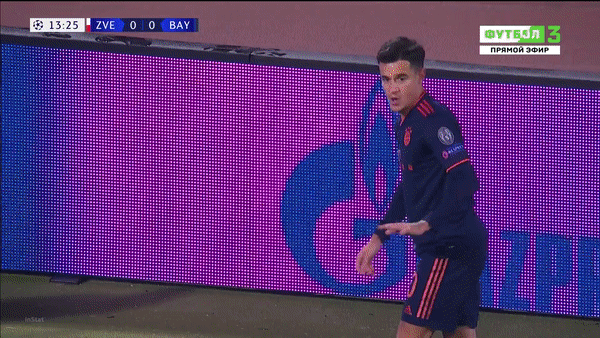
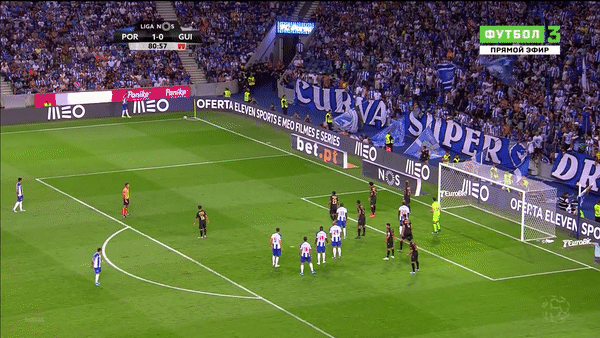
- Focus on creating an opportunity for a specific player, or attacking a specific zone, by using different methods (manipulate with movements, blocks/screens etc.), therefore this kind of movement is more dependent on a precise delivery. Although it’s very important to create a routine, where still more options are available (e.g. it’s not optimal to sacrifice 2-3 or players just to create space for others, whilst not offering an option for the delivery).
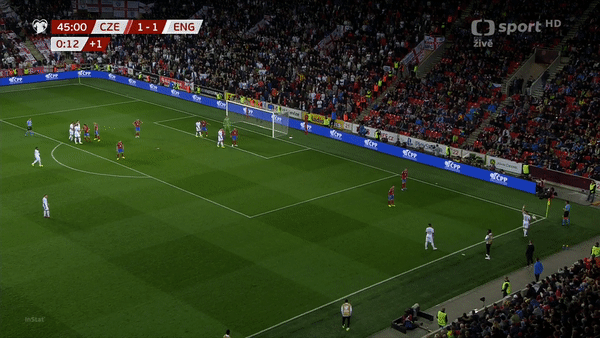
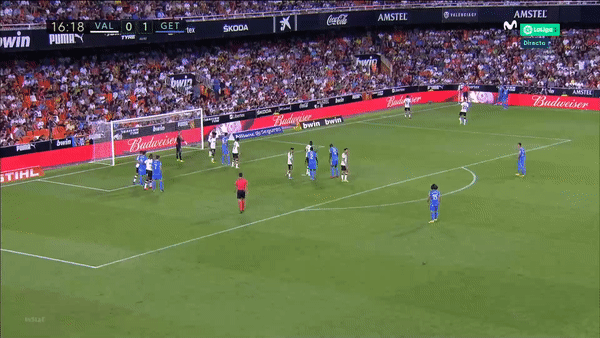
Strategies against man-marking
Blocking/screening
The most general way is a block for a specific player, although here it’s usual that in most cases these are easily recognizable. For example, it’s very frequent that the blocker already turns around to face the teammate he is going to make the block for. The block itself can still be successful, although based on these signs an opponent can make quicker reactions to make adaptations before the corner is taken. It’s possible to use them as misdirections, to confuse the opponent’s, although I’m yet to see a team who uses them on a general basis. Thus it’s important to take this into consideration, whilst creating a blocking routine, to offer as less signs as possible for the opponent.
A specific way and purpose of a block is to create a mismatch, as teams will react to a block by making a switch in their cover in before the corner is taken. Another form of that is to put an attacker to the rebound zone, where he might be paired/closed with a less quality marker, and then you already have the mismatch.
Interesting effect of a block is, when the initial blocker becomes open. Since his main task is to block, the movement after the block is uncovered in most cases. In this way even if the block is defended well it’s still possible to create an effective routine with a further adaptation.
Tricks to create space/separation
Apart from a block, separation can be created by using several easy and useful tricks. For example a simple run closely to either shoulder of a teammate can easily create a separation from the marker, as the opponent has to bypass that teammate as well. Although if he runs in the same route, he already gets behind the attackers, therefore it’s more optimal to make this run from the other direction than the attacker, but considering that he has to run a longer route (1-2 metres is enough), there is a higher probability to create a small separation. A run to arrive from depth can achieve the same, by standing further away from the goal, an attacker might create issues for the marking player, until when to follow him. In these cases it often happens that the defender maintains a slight distance, which is though enough to create a dynamic advantage over him.
A fundamental in all these routines is the distances between the attackers. By reducing that the marking becomes immediately harder, since due to the various routes -opposite etc.- the tight man-marking becomes almost impossible to achieve successfully.
Body feints are also a simple, yet effective movements to manipulate the marker’s behavior. Moving towards the near-post can blind/fix the marker’s attention, from where it’s heavier to cover if the attacker decides to move away towards the far-post. With the same principle moving towards the far-post to open the near-post zones could also be effective -but here timing is the key to separate.
Crossing routes, movements
A crossing route is a special form of blocking/screening, which includes a simple opposite movement between 2 attackers closely to each other- similar to the ‘create traffic’ principle. A huge advantage is that it functions as an indirect block, therefore there is a smaller chance to make a foul from it, than from a usual block. This aspect is very important to consider to make as clean routines as possible.
Forming a line
By standing closely to each other in a horizontal or vertical line it’s a solution to create marking issues or mismatches for the opponents. If the markers try to stand closely next to their respective attackers, they might get caught easily in the “traffic”, as the line’s function is to disrupt the marking, by mixing their routes -very often to see that one time the 2nd player in the line attacks the near-post, then in the next corner he moves towards the far-post.
To counter that the defensive sides often react to that by switching to zonal-marking, to prevent being disrupted by the various routes. Although this is where the offensive teams lack to make further adaptations, by sticking to the same routes independent from the oppositional system. A good idea for that to instantly switch the staggering or routes as now the opponent applies the zonal-marking principles, therefore a simple zig-zag move will not confuse them -as it would against a man-marking scheme.

Create underloads
By being able to manipulate the starting and ending positions using the basic positioning and movement routes, underloads can be created in order to open up space for a specific attacker in a vacated zone. The purpose is to form an isolated situation, ideally for the best attacker in the team -optimal to mix with the concept of mismatch, less quality attacker against an even less quality defender (rebound player to arrive).
Lay-offs/cutbacks to shoot
Generally, it’s easier to manipulate a man-oriented scheme in order to open spaces for direct shots. Although the problem is not the shot itself, but the shooting lane. Against a zonal-system there is a smaller probability to find an open shooting lane, since the opponent will occupy the way towards the goal with a higher density. When playing against a man-marking scheme, it’s important to manipulate them in a way to open up a path towards the goal for the shot. For example, moving towards the far-post to open space for the shot at the near-post is an optimal way to go for.
Short corners
Generally short corners function better against zonal-marking, where the ball can fix the defenders’ attention, therefore the structure becomes more vulnerable against overloads etc. Opposed to that using short corners against man-marking is more functionable if it’s used to create ballnear advantages -2v1/3v2 wide, especially since it became a tendency lately that teams defend a possible short corner with only 1 defender -to prevent having -2 defenders because of a short corner. It’s important to divide these functions against the different systems, in order to create more optimal routines, as lot of teams tries to use short corners against man-marking, without using any movements inside to separate/dismark, only the ball to manipulate. Therefore it’s important to mix the short corner itself with the aforementioned solutions -both against man and zonal-marking.
Apart from the movements, the timing is also very important, still often neglected. There are several signs, which can be an indication/trigger to start the movement, the most frequent one is the arm sign from the kicker. 1 or 2 arms up, which can be the sign of a specific routine or a marker for the movement – e.g. kicker raises hand, attacker starts to run 2 seconds after it. It can be seen in a lot of cases that the attackers inside don’t have the necessary dynamics to arrive, making it easier for the markers to defend. The dynamics of the movement also affects the jump itself, since a marker can distract the jump easier if the attacker moves in a less dynamic way.
Strategies against zonal-marking
On a basic level there are 2 ways to defend in a zonal-system -here both are taken into account to design a routine:
- Everyone strictly defends zone inside the box, regardless of the attackers’ movements -no blocks, slowing down etc.-, 1st & 2nd line or collective shape occupies the predetermined spaces (1st type).

- The 1st line defends zonally – usually a 4 or 5-men line-, whilst the 2nd line’s task is to slow down the runners -usually 3 defenders, who can be called as ‘stoppers’ (2nd type).

It’s important to divide the different setups according to the cross’ angle(mostly happens in the 2nd type). If it’s an inswing, the zonal shape will generally drop deeper, whilst against an outswing, the line usually positions in a diagonal, to have better access according to the ball’s delivery -towards the far-side. Therefore whilst designing a routine, it’s essential to consider how the opponent will react, in order to prevent suboptimal situations -e.g. when outswing vs. a diagonal line, more optimal to attack the near-side than the far-side.
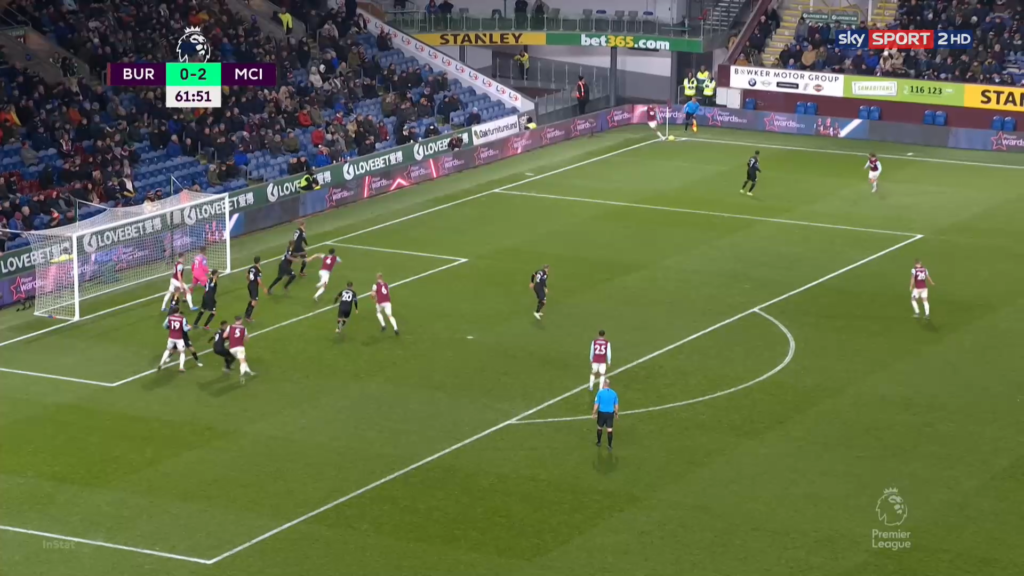
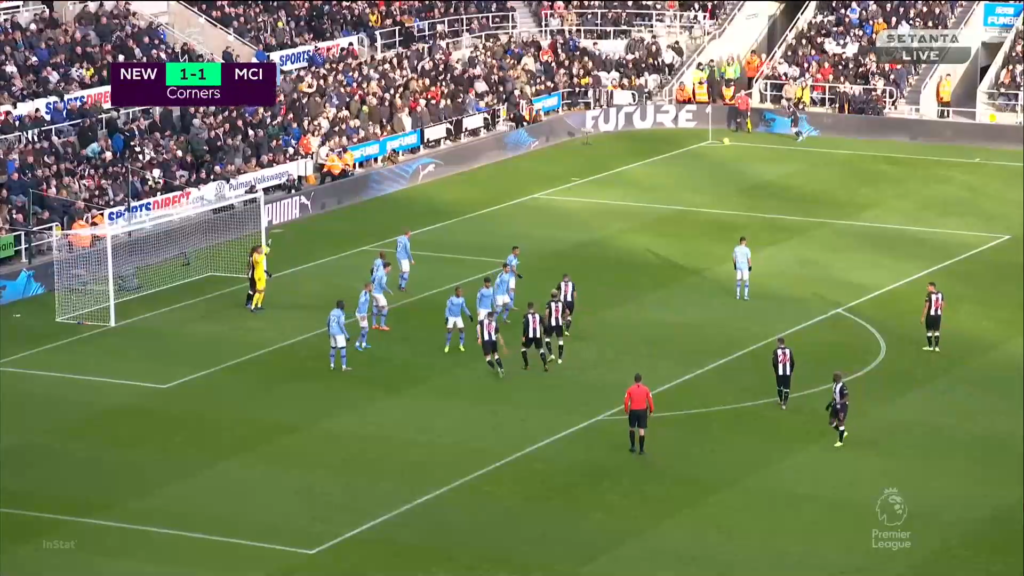
Another difference is how many players are forming the 1st line. Usually varies between 4 or 5, although it’s important to consider how much space to cover. With a 4-men line a probable weakness is the access after the 2nd balls -such as the basic cover on the far-side, or if the line wants to have better access to there too, it must be wider, which might open bigger spaces between the defenders.
Player(s) at the post(s)
Probably an eternal question, if it’s worth to use players at the posts or not. The tendency is that less and less teams put a defender there, which implies to the decreasing importance of that role/position. I divide the question into 2 parts, based on the main purpose: “Which is more important, to prevent the goal or to prevent the header itself?” In case the emphasis is to prevent the goal, then a team should definitely put a defender to the post. On the other hand, if the emphasis is to prevent the header, then a team should focus on having as many players as possible inside the box, in order to increase the chance for a defensive header. Although there is a halfway solution for that, called as a ‘modern post-defender’. He has a dual role, usually standing between the post-edge of the 5. If the ball arrives to the near-side, he stays in front of the goal, acting as a zonal-marker. This prevents the other zonal-markers to leave their positions, therefore they can maintain the distance between each other. If the ball arrives to the centre-far-side, then the defender moves back to the post, acting as a normal post-defender.
Overload
Such as against a zonal-oriented mid-block, it’s possible to create a free-man with an overload in a specific zone -even with or without the free-man, this has the function of increasing the probability of a header in a specific zone.
Spaces in front of the shape
Even if the defensive side is in a zonal-oriented system, there are several movements to manipulate them. For example, by using the staggering principles to divide the timing of the attackers, 2 runners can make an early movement to block the 2nd line/or to force the shape deeper towards the goal, in order to open the spaces in front of the shape. Plus, as the 2nd line often formed by smaller/less quality players in terms of heading, jumping, it might create mismatches for the defensive side.
Move to manipulate
Opposed to manipulating man-marking schemes, here the basis of manipulation is the direction of the movement. It’s very often to see a run towards the near-post, which forces the nearest defender to make a step forward, immediately opening up spaces in the structure, which can be attacked. These runs can be called as misdirections.
Blocking
Blocking can happen in several variations. It’s often to see a block on the 1st/last defender of the structure, such as a block on the 1st and 2nd line as well, all with relatively high effectivity. This is due to the fact that the defenders are often oriented only towards the ball both with their body and eye, therefore they become more vulnerable to a blindsided block or movement.
Short corners – to move the shape
Using the ball to move the shape is the basis of short corner routines against zonal-marking. Since their attention is focused on the ball’s movement and position, it has the negative effect of being bind by that. It’s often used to force them to make an outwards movement to exploit the space behind or to create an overload on the far-side against the slightly stretched/disrupted shape -as they move into either direction the shape is getting stretched, which can open valuable spaces to exploit.
Free-kicks
Strategies against a man-oriented setup
Whilst looking the team’s defensive strategies for corners, there is a much smaller difference in defending free-kicks. The most frequent strategy is to form a line, and defend using zonal-marking principles. Man-marking is much rarer to see, although there the same strategy is applied as for corners: 1 or 2 defender functions as a zonal-marker, whilst the rest is in a tight man-marking. In order to be effective against a man-marking based scheme, the aforementioned solutions generally function well, such as creating traffic, crossing routes or small groupings.
Strategies against a zonal-oriented setup
In order to design effective routines, it’s important to understand the key defensive aspects and principles for zonal-marking/line defending :
- height of the line
- width positioning of the line – is it shifted towards the near- or far-post
- distances in between the defenders
- timing of their movement -› late or early
- reaction to overloads, offside positioning, blocks
- personnel -› where is it possible to create a mismatch
Depending on the line’s height, there are going to be spaces to attack in front of or in behind the lines. This can also determine if it’s more optimal to use inswing or outswing for the cross. Generally, defending teams tend to push up their line as high as possible, to prevent being too close to their own goal, increasing the distances for the attackers, such as for the header itself.
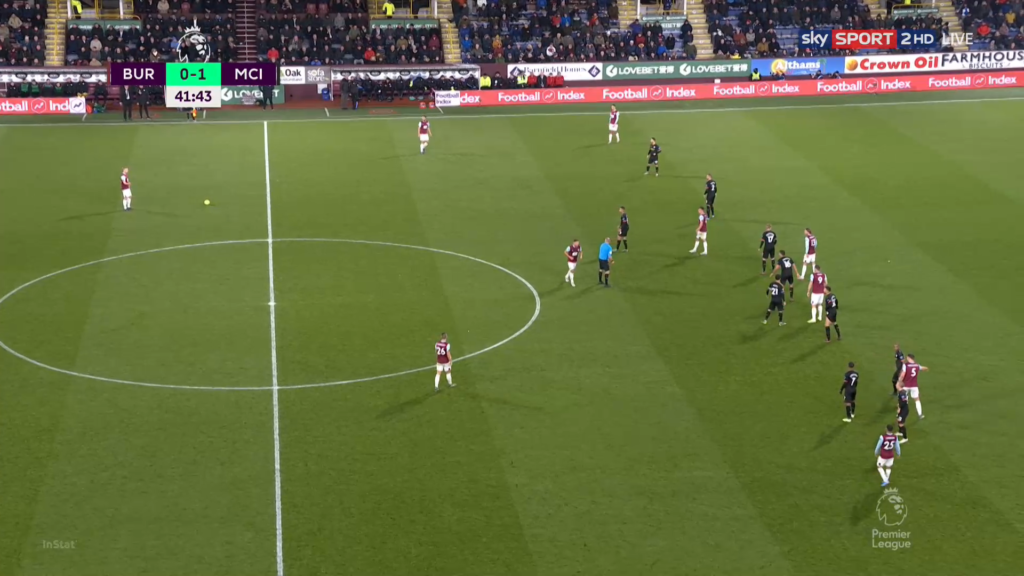
The line’s position on the horizontal axis is usually somewhere in between the imaginary line of the near- and far-post. Although with specific setups the line can be stretched or manipulated to shift to either side -e.g. overloading the far-side might force the line to move towards there, opening up more spaces at the near-post zone -and vice-versa.
Related to this it’s very important to look at the distances in between the defenders, if there are specific gaps that open up on a regular basis -quite often to see the space to open up between the 1st and 2nd player in the line, such as the space in front of the last defender.
The timing of the line’s movement is probably the most important aspect to look at. There is quite a difference in that, for example in Italy it’s more common that the line moves earlier -at around the kicker’s 2nd-3rd step-, in order to decrease the space between the line and the goal. On the contrary the other way to go is to wait as long as possible, and only move just before the kick is taken. This can easily put the attackers off-balance, leaving them offside in case they move early. From an offensive standpoint it’s more optimal to use an inswing in case the line moves early -exploit spaces in front of the line-, whilst using an outswing if the line moves late -exploit spaces behind the line. Plus, important to adjust the attacker’s timing & positioning according to that. This is also the reason to put 2 kickers to take the free-kick, to confuse the defenders who will take it, causing timing issues for when the line should start to move.
A run from depth is often used against the line, to create a dynamical advantage over the more static defenders. For an optimal execution the key is the distance & timing, also it can be mixed well with a block as well – since the runner from depth can have various routes to go, therefore might be out of the defenders attention.
In order to manipulate the line’s behavior the attacking team can use overloads, fake and early runs -misdirections-, offside positioning or blocks. As against the zonal-marking corner defense, overloads generally work well, since the line can’t shift towards the overload too much, as then other spaces would open up. Fake and early runs hold the purpose to confuse the timing -early move can manipulate the line to move slightly earlier- or to move out a specific defender from the line. Offside positioning has a 1st and 2nd intention: a 1st intention is to cause issues for the line how to defend that -this might also force the line to move earlier-, a 2nd intention is to attack the 2nd balls -e.g. attacker(s) on near-side stay offside
By putting a player(s) offside, it has both a 1st and a 2nd intention. The 1st intention is to confuse the line, often forcing a defender to jump deeper earlier, which can create huge gaps if the line does not move together at the same time. The 2nd intention is to attack the 2nd balls. Very often to see 2-3 players already positioning offside behind the line by 3-5 meters on the near-side, whilst the delivery arrives to the far-side, where the attacker -usually someone with a quality heading ability, isolated situation- tries to head the ball back to the centre. By positioning offside the attackers are creating a distance and separation from the line, to dismark themselves at the centre.
From offside it’s also an option to make a block backwards, to open up a specific gaps inside the line. Although in this case it’s again very important to avoid fouls, by not making a huge block, as sometimes it’s enough to slow down the defender slightly, to force him out of balance and position. This type of block usually happens at the centre, to block out defenders at the middle of the line -e.g. mixed with a run from depth. Other blocks happen at the outside zones, blocking the 1st or last defender from the line. Near side blocks are often used to create shooting or crossing opportunities, whilst far-side blocks are used to open space for a header -plus header back to the centre.
In order to stretch the line horizontally a simple distribution trick can function well. For example putting 3 attackers to one and 3 to the other side, it’s possible to stretch the defensive line wider to open spaces at the centre, reducing the cover by spreading out.
In case of a club team, there are more stable tendencies in terms of the personnel they use. This can offer valuable information to know which spaces to attack with a higher emphasis -e.g. opponent, who put their smaller full-backs as 1st and last of the line-, in order to create mismatches.
7 Kommentare Alle anzeigen
beggarmanjoe February 12, 2024 um 3:24 am
it’s so sad all the videos appear to be dead, this seemed like a golden resource. if fixable, i beg thee do
Paul McKillop May 20, 2022 um 9:03 am
From the defensive point of view, on free kicks, how important is it to play a high line on the edge of your box? Does any team consider not playing the offside trap on such free kicks?
Take this game for instance, there were 3 goals from such free kicks:
https://www.youtube.com/watch?v=lTgsyZ0xE6Q
I can’t help think that having the defenders running back towards their own goal makes it very difficult for them. Would they perhaps be better to be deeper and facing the ball?
Also, the goalkeeper has no chance with a header from 6-8 yards as in this video. The ball is close to the keep but he just doesn’t have enough reaction time to get there. It might even be worth having a couple of defenders on the goalline and let the keeper attack the ball in the air more aggressively?
Steven July 20, 2021 um 1:43 pm
In regards to free kicks, could you explain how using an outswinger with a late-moving line exploits the space and an inswinger with an early moving line? I can’t understand why either would be more beneficial. Thanks for this brilliant article.
CT August 9, 2021 um 3:01 pm
I also didn’t understand that. For me, the other way around makes more sense. But I don’t think that IB wrote that wrong.
Emmanuel August 9, 2021 um 10:42 pm
It makes sense the way István has described it. The trajectory of an outswinging cross means you’re aiming to put the ball behind the defensive line (i.e. near to goal). So if the line drops late, this is the optimal space to attack. The inverse in the case of an inswinging cross so if the line drops early, the space that opens to exploit is in front of the defensive line.
Emmanuel August 9, 2021 um 10:57 pm
So to conceptualise it visually, if, for example, a delivery comes from the right and it’s an outswinger, the ball bends out and back in towards the far post so away from the defensive line + inverse for the inswing.
CT August 10, 2021 um 7:02 pm
Oh thank you now it makes sense. I thought an outswinging cross was to attack in front of the defensive line.